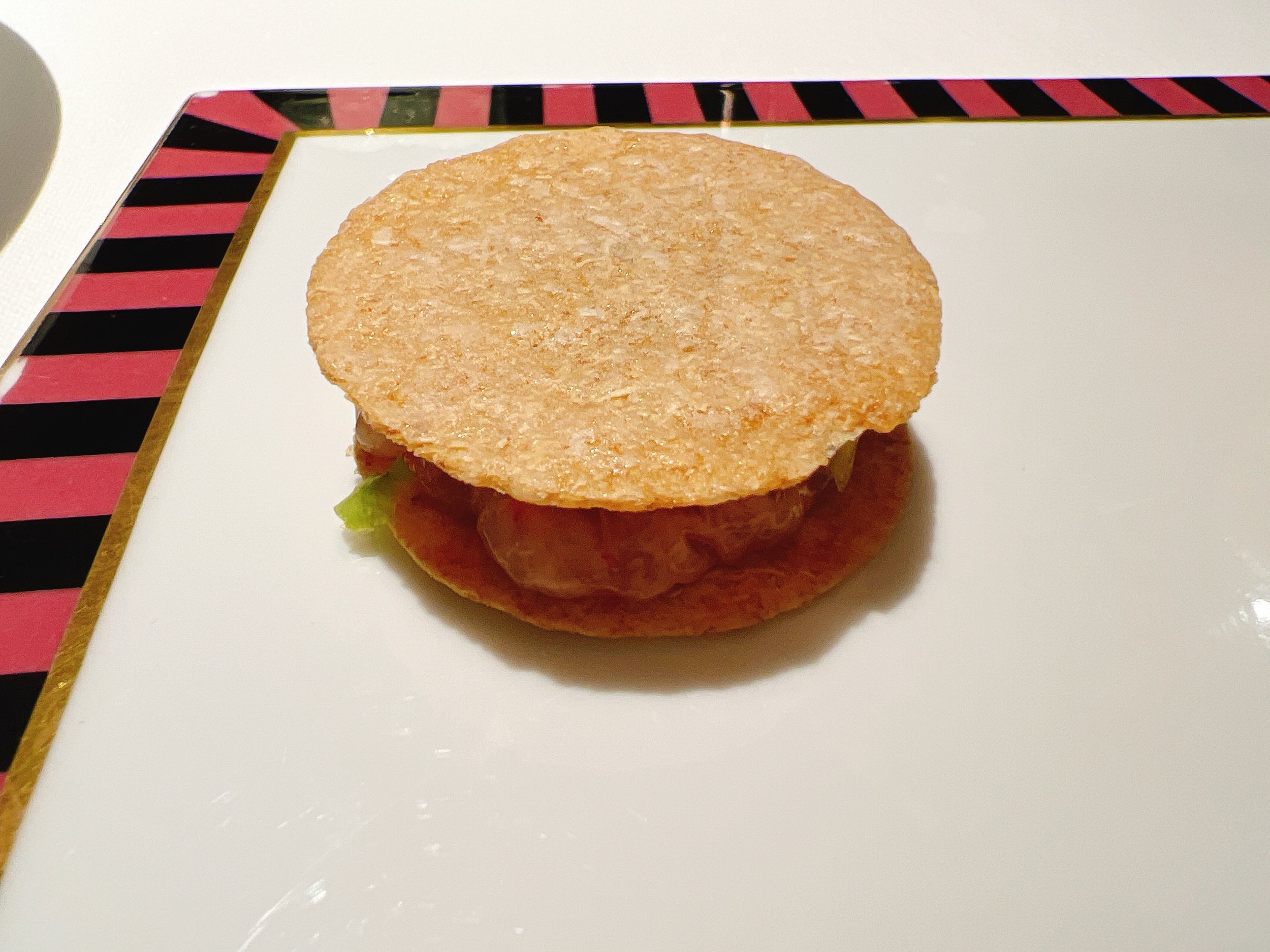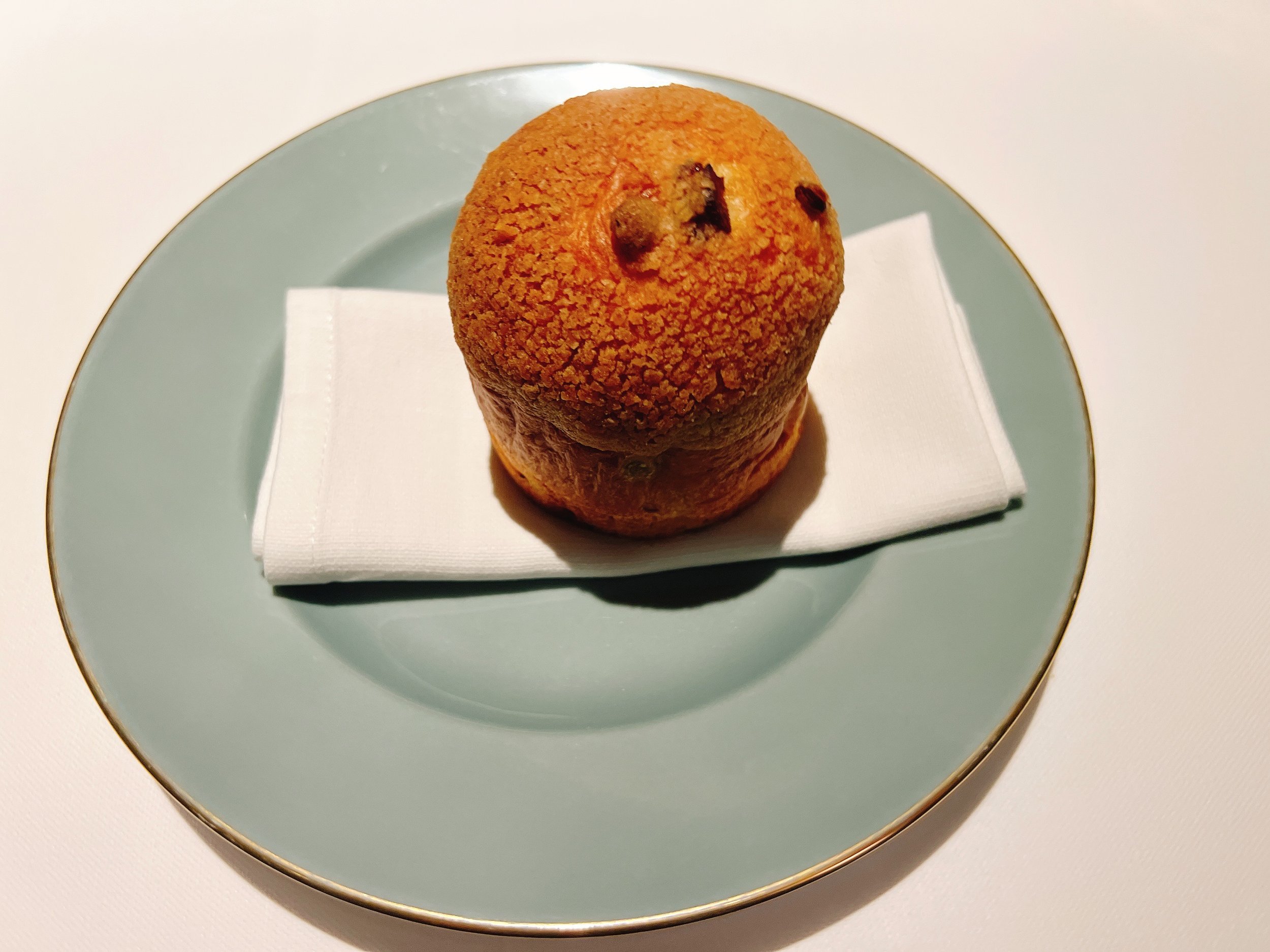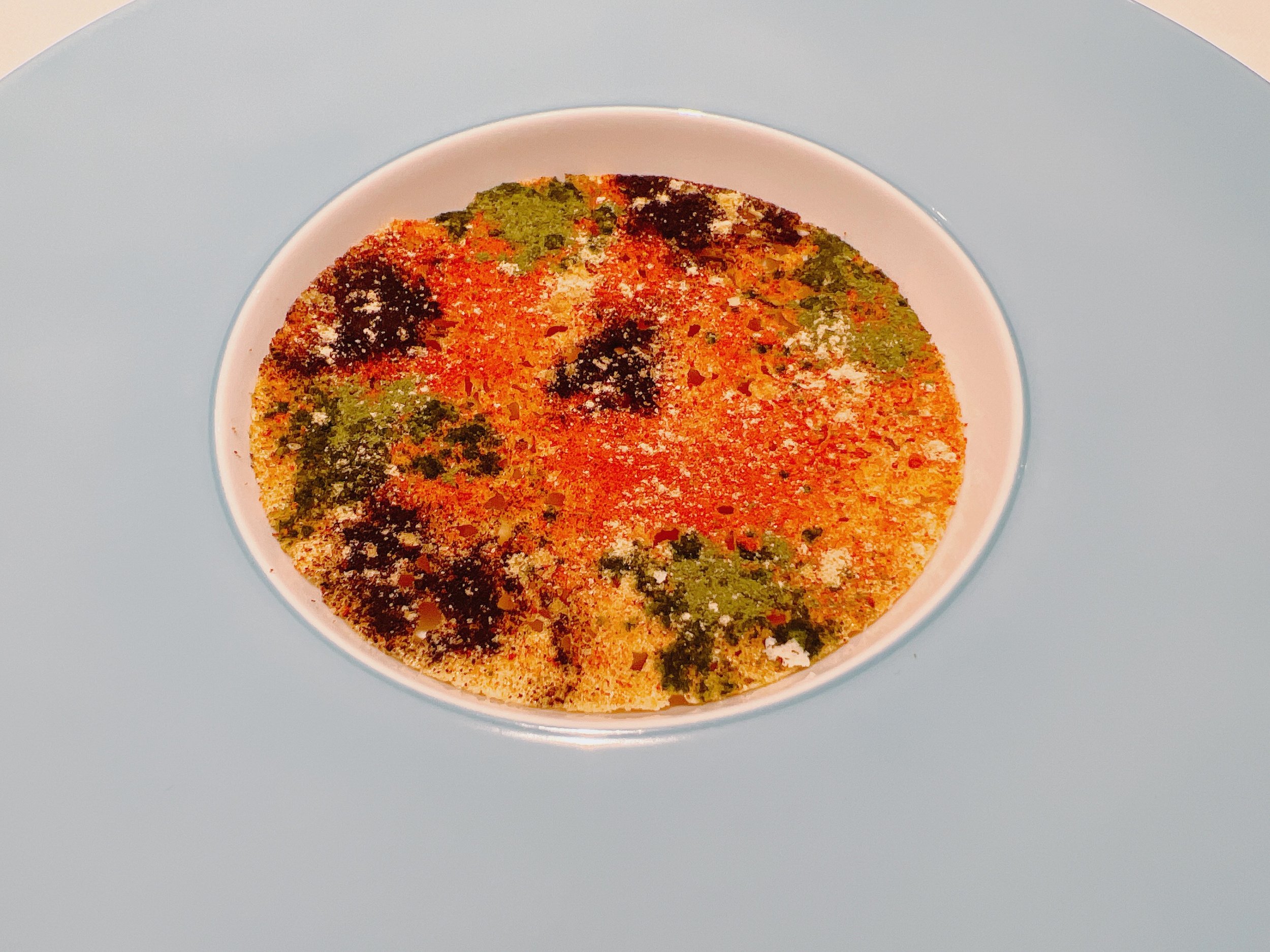Osteria Francescana - Modena
Rating: 16/20
Where: Modena, Italy
When: Dinner for 2 on 19 September 2022
Cost per Person: Tasting menu 320 Euro, Wine Pairing 210 Euro
Accolades: 3 Michelin Stars, #1 on Top 50 Restaurants list (2016, 2018)
Why: Novel takes on traditional Italian food, bragging rights
Osteria Francescana is one of the most famous fine-dining restaurants in the world. It topped the Top 50 restaurant list in 2016 and 2018 and was also highly placed in the preceding years. Add to that being featured on the first-ever episode of Netflix' "Chef's Table", and it’s no wonder that its reservations are snapped up within seconds when they are released at the beginning of every month.
My first experience with chef Massimo Bottura's cuisine was seven months prior at his restaurant in the Gucci store in Beverly Hills. What seemed like it could be a flagrant money grab actually resulted in a lovely lunch with excellent food and wine. So I was curious to try the restaurant where it all began.
Osteria Francescana is located on a quiet street near the center of Modena. Its facade it pretty nondescript, all tables are hidden indoors behind closed curtains. Only some discreet plaques tell of what can be found behind the modern, gray doors.
Arriving slightly after our reservation time of 8pm, we were efficiently led to our dining room, one of at least three that I saw. There were only three tables in our room, one with an English-speaking couple celebrating their 20th anniversary, the other with a couple from Italy. The decor is modern, but with an arm’s-length relationship to coziness.
A leaflet at our table detailed the tasting menu and the available wine pairing. An a la carte menu and the full wine list could be obtained by scanning a QR code - thankfully the restaurant provided good free wifi. I assume that most people would go for the tasting menu - given the pre-planning required in making a reservation (at least six months ahead), why not go all in? We certainly did, and I ordered the wine pairing as well. That pairing was pleasant enough, with a couple of excellent glasses. It went decently (but not outstandingly) with the food.
Dinner started with the traditional breadsticks. The ones served here were truly amazing; we finished almost all of them, and the serving was substantial. Long, thin, light, crunchy, savory - this is what all breadsticks should be like 18.
Speaking of breadsticks: oddly, we were charged a 5 Euro coperto at the end of our dinner - common enough at regular Italian restaurants, but a bit odd at a 500 Euro per person fine-dining venue. Maybe it was a nod to the menu's theme "Come to Italy with me"? All courses were variations on classic Italian dishes, often transformed dramatically. Since I was not familiar with many of the original dishes, some of these cultural references were lost on me - next time I should come here with a local food expert, I suppose.
A trio of small bites started our dinner. A savory baba with tomatoes and topped with a caper turned out to be pretty sweet despite its description, mostly thanks to the tomatoes. All in all, this was midway between a dessert and an amuse bouche, and more odd than tasty 15.
A cous cous cracker sandwich was filled with shrimp, dill and tomatoes. Definitely on the savory side this time, it was lovely with a good crunch from the cracker 17.
Third, we were served a liquid panzanella. It had all the required flavors of the traditional salad - bread, onions and tomatoes -, but it came in the form of a cup of clear hot broth. An interesting idea, but I would have preferred the real thing - texture is an important part of a real panzanella. Also, the broth's flavor was a bit muted, more heavy on the bread flavor than on fresh tomatoes. I wonder if this dish would work better cold and with more tomato water. Fine, but again somewhat weird 15.
The first official course was a small panettone with lentils and small cubes of sausage (cotechino). Our servers mentioned that this was a different take on the classic sweet Christmas-time treat. As it turned out, the little bread was still quite sweet thanks to a coat of sugar on top. And that sweetness was the dominant flavor, the lentils and sausage didn't contribute much, there was too little of them. The paired Moscato d'Asti also suggested a sweet dish rather than a savory one. Fine, but not great, this was an odd start: surprisingly sweet and surprisingly heavy and bready for a first course 16. My more generous dining companion (my mother) would have given it an 18, however.
Next came a "seafood salad" served in an oyster half-shell. When the dish first arrived at the table, the oyster was covered by a sheet of plastic - symbolizing the pollution of our oceans by plastic garbage. After its removal by our server, we were free to dig in. The dish used oysters, mussels and clams, but only to flavor a seafood broth than was then incorporated in the sauce. No solid seafood (unless you count a few pieces of caviar) was to be found in this dish. The main contents of the salad were slices of zucchini, as well as pureed zucchinis in the sauce. I liked this sauce a lot - savory and nicely salted. A good dish as long as you don't expect a traditional seafood salad 17.
A play on a seafood street food from the nearby city of Rimini arrived soon thereafter. That street food is usually a wrap made with cheese and anchovies, but here it came in a deconstructed form. Marinated anchovies rested atop cheese, a rocket salad and some small bread crackers. This stack was surrounded by cheese water. The anchovies were very, very salty, but pleasingly fishy. Overall, this dish was interesting and pleasant, but not something I'd go out of my way to eat again. I wonder how different my experience would have been had I been familiar with the street food that it was based on. An interesting idea: what if the kitchen had served both the "traditional" and the reinvented version of this dish side by side? 17
The motivation for the next course was a classic dish: eggplant parmigiana. Well, not the whole dish, but just its "best part" (as our server put it): the cheesy, crunchy top. This translated to a risotto with dried tomatoes that was covered by a crunchy disc of parmesan. Olive, herb and tomato powders were added on top, giving the dish a colorful appearance. I found the parmesan disc on top to be unmemorable by itself, it was better mixed into the risotto. Speaking of risotto, it tasted mostly of the dried tomatoes, a bit sweet and acidic; some more cream might have been better. Also, the rice was cooked a bit longer than al dente, a curious choice. All in all, only a so-so risotto 15.
Three different ravioli came next, showing the versatility of this kind of pasta. Representing the north of Italy was a ravioli filled with hazelnuts and mushrooms - a nicely earthy bite with only minimal texture from the finely ground hazelnuts (15 or 16 for this one). The middle of Italy was represented by a ravioli filled with chicken, tomatoes and onion. Very tomato-y and creamy, this was the best of the three (16). Finally, the south of Italy was represented by "pizza", not really a ravioli, but a small ball of escarole surrounded by toasted pieces of flatbread. The escarole was unpalatably bitter - really the only thing reminding me of pizza was the flatbread (14). On average, 15.
At this point, we were served our "second bread”, making me wonder whether I should have made the panettone last until now? The bread was a sourdough made with ancient grains: warm, chewy and with a medium crunch. Not exciting, but neutral enough to be good for sopping up sauces. No butter or olive oil were in sight 14.
Porchetta is usually a dish made from rolled-up pork that has a nice crust on the outside. Our next dish recreated this classic, but used turbot instead of pork. The outside of the dish was made from spelt that had been slowly dehydrated, leading to the desired crunch. A pork reduction was added on top, an herb sauce on the side, and the whole dish rested on spinach. We also thought that there were hints of fennel. Overall, I found this dish to be a bit too dry, maybe due to its artificial skin? 16 (18 from my mom)
A Tuscan steak arrived without the, well, steak. What remained was the side: roasted lettuce with a red wine reduction. The lettuce was a bit bitter, and the cream hidden underneath it somewhat fishy. This dish felt like it didn't know what it was supposed to be - overall it was merely ok 16 (or 18 from mom)
The pre-dessert was made from shades of green: a sorrel granita, a parsley and basil sorbet and pieces of asparagus, all served with a yogurt sauce. There might have been a touch too much granita relative to the other components, but otherwise this was an interesting combination - mostly savory, but with the asparagus and yogurt contributing some sweetness 17.
Our main dessert was spaghetti with a cherry sauce. They were topped with almonds, caper power and an almond reduction sauce. Pasta as a dessert is definitely not something you see everyday (outside of Indian cooking). The pasta was cooked a bit harder than al dente, and the dish was at most semi-sweet - no sugar rush here. An interesting combination for sure, but in the end a not particularly satisfying dessert 14.
Petit fours came next (but not last, curiously). A foie gras macaroon with onions and truffles was nicely sweet (18), a cannelloni with guanciale more savory (14), and a chocolate with vinegar cream ok (15), for an average of 15.
The final, final course was a play on a caprese salad. What looked like a smashed tomato on the plate was actually made from white chocolate and filled with red fruits. It was surrounded by a red sauce made from tomatoes and red fruits such as raspberries, and the white sauce next to it was made from cheese. Visually the most impressive dish of the meal, it was a mix between savory and sweet - interesting, but not my favorite tastewise 15.
Overall: This was a nice dinner with good, but somewhat impersonal service. There were many interesting experiments in deconstructing traditional Italian dishes, but the results left us a bit wanting and wondering whether just serving the original dishes would have resulted in a better meal. What we got felt like over-thinking and over-complicating food for the sake of being able to do so, and not for actually creating a superior or more memorable version of a dish. Given the high ratings from Michelin and the Top 50 list, one can't help but leave a bit disappointed. The arguably "best" reason to go to this restaurant seems to be the bragging rights, and not the food itself. Ironically, I preferred the food at its cousin In Beverly Hills.
It’s instructive to compare this restaurant to Noma, equally hyped-up by Michelin, the Top 50 list and Netflix, but also a bit of a letdown for me. Both are big on novel dishes, often putting cooking trickery over deliciousness. But whereas Noma had some truly spectacular dishes, easy 20s when rated, Osteria Francescana's rating pinnacle was their breadsticks…. There was no single dish that I would order again. So if one is in the lucky situation of having to choose between these two restaurants, my choice would be Noma without any hesitation 16.



















